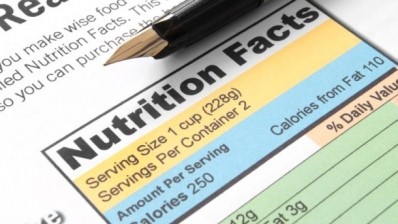Two-year time frame 'would almost certainly drive an increase in food prices'
Switching to new Nutrition Facts label in two years is not feasible, says Kroger

When the proposals are finalized, the FDA has proposed a compliance period of two years.
But Brendon Cull, Kroger’s senior director of government relations and regulatory affairs, said this did not give the industry enough time, and said five years would be more appropriate.
In a comment submitted to the agency, he said: “We do not believe it is feasible for all manufacturers and retailers with private-label products to convert all items in just two years. With more than 16,000 products, it would take us approximately five years to finish the labels through our ordinary processes.
“Nationally, many companies use nutrient databases such as ESHA to create nutrition and supplement labels. We believe the sources, third-party labs, and research groups for nutrition information will not have the resources to accommodate the entire food manufacturing industry’s need to alter product labels in just two years.”
Changes would cost Kroger an extra $40m
As for the cost, he said, “analyzing nutritional information for this many labels would take approximately 148,000 labor hours to accomplish, costing approximately $8.8m. If we had to do all of our products in just two years, we estimate the additional expense to Kroger would be approximately $2,000 per label, costing approximately $32m. This includes redoing the art and press for each label. The total incremental expense to Kroger would be more than $40m.”
He also claimed that there was “limited label printing capacity in the industry to accomplish the volume of changes required by all manufacturers”, noting that more than 20,000 new food & beverage products are now typically introduced to the US market each year, nearly twice as many as in 1994 - when the current label was introduced.
Two-year time frame 'would almost certainly drive an increase in food prices'
A two-year time frame “would almost certainly drive an increase in prices of food products for customers”, he claimed, while “manufacturing costs would likely increase, driving an ultimate increase in the prices customers see in their grocery stores”.
An accelerated timeline could also lead to increased waste, he argued: “Existing product packaging that has been printed but not yet used would need to be discarded if the proposed timeline stands as proposed.”
Kroger operates more than 2,640 stores in 34 states, but is also one of the largest manufacturers of private-label products, operating 37 plants that produce around 40% of the private-label products it sells in its stores.
On its Q3 2014 earnings call last month, bosses said private label products accounted for 27.3% of total units sold and 25.8% of dollar sales (excluding fuel and pharmacy), with Simple Truth and Simple Truth Organics ranges doing particularly well, both generating double-digit unit and sales growth.
What are the proposed changes?
To read the FDA proposals in full, click HERE, but here’s a summary of the key changes:
- Remove ‘calories from fat’.
- Declare ‘added sugars’.
- Make ‘calories’ more prominent.
- Keep mandatory requirement to list calcium & iron, make vitamins A & C voluntary.
- Add mandatory requirement to list vitamin D & potassium.
- To update reference values used to calculate % DVs of nutrients.
- Updated reference value for sodium from 2,400mg to 2,300mg.
Separately, the FDA is also proposing to tweak serving sizes to better reflect real-life consumption behavior. To read the proposals in full, click HERE.













